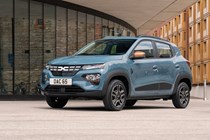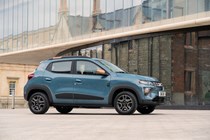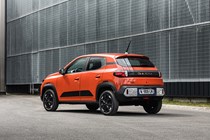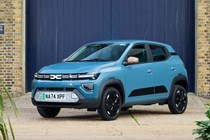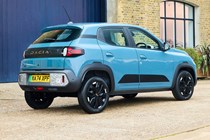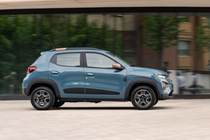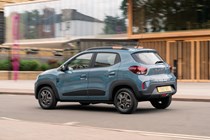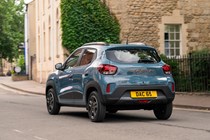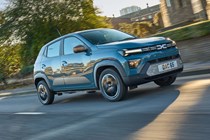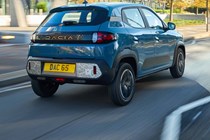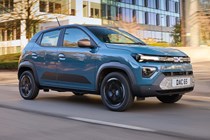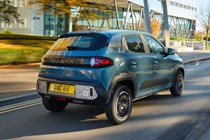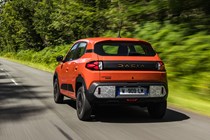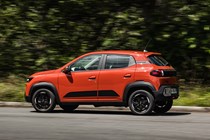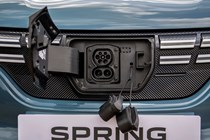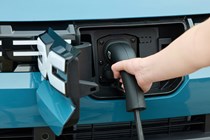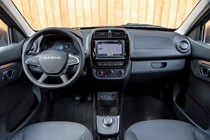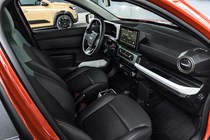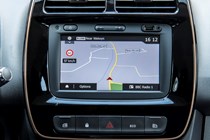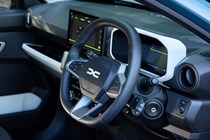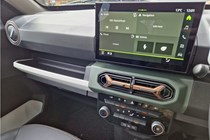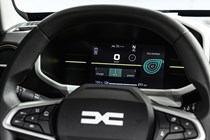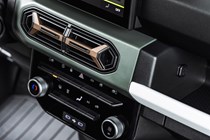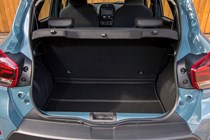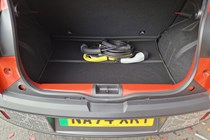Dacia Spring running costs and reliability
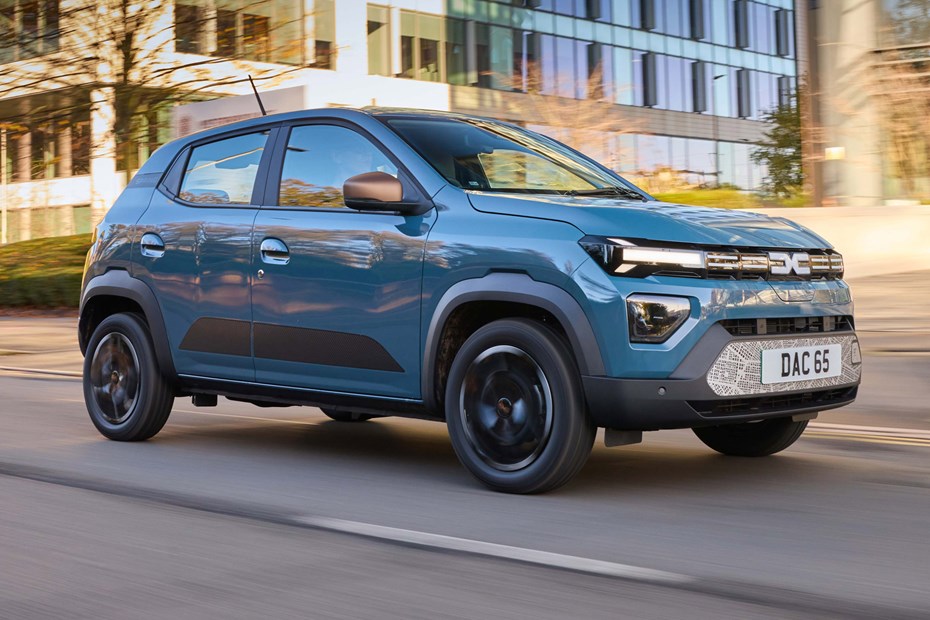
Miles per pound (mpp) ⓘ
| Electric motors, home charging | 12.9 - 13.5 mpp |
|---|---|
| Electric motors, public charging | 7.0 - 7.3 mpp |
Fuel economy ⓘ
| Electric motors | 4.4 - 4.6 miles/kWh |
|---|
- Small battery means a small driving range
- In the real world that means around 100 miles per charge
- Warranty up to seven years available
What are the running costs?
There’s an increasing trend for car manufacturers to fit bigger and bigger batteries into their electric cars, in an effort to achieve the kind of long distance ease that we’re used to from petrol and diesel cars. This, however, drives up prices and is a literal waste of resources if most of your journeys are short trips around town.
The Dacia Spring is the polar opposite of this approach. Dacia fits a small 26.8kWh battery pack – not much bigger than those used by the original Nissan Leaf and Renault Zoe more than a decade ago – and in doing keeps down not only cost but weight. If you can cope with the resulting 140-mile official driving range, that’s a great advantage for the Spring.
What’s more, in some of our initial testing, the Spring was outstandingly efficient, indicating 5.1 miles per kilowatt hour; for reference, we typically see around 4.0 miles per kilowatt hour from the Tesla Model 3, and that’s generally considered an exceptionally efficient electric car.
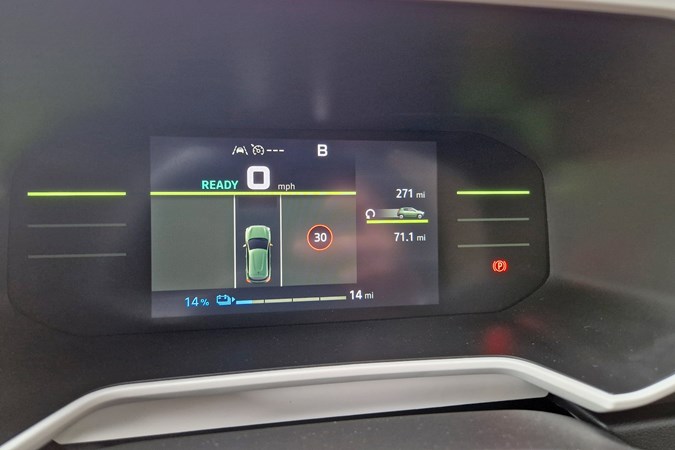
In our more recent experience driving the Spring in the UK it seems more realistic to suggest buyers should expect to get around 100 miles of real world driving out of a charge. This is based on driving on a mix of roads and at a variety of speeds – including travelling quickly – rather than aiming for maximum mileage.
Regardless, Dacia cites data from its existing European customers that says they only average 23 miles per day. If the Spring is bought mostly as an urban runabout, as we would expect, the driving range should be more than enough. However, when going further afield you will also be hampered by slow public charging times.

You need the top-spec Extreme model to get DC charging at all, and even then it can only manage a 30kW rate – many of the best plug-in hybrids can charge quicker than that these days and it is unusual to see a full electric vehicle with anything less that 80kW capability. A 20-80% charge in the Dacia therefore takes around 45 minutes, despite the small size of the battery.
But then, rapid charging on the public network can be an expensive business. So perhaps it’s more useful to know that a 7kW home wallbox charger requires only around 4 hours to take the battery pack from 20 to 100%. Better yet, you could save yourself the cost of a wallbox altogether, as a 20-100% charge on a domestic three-pin plug should take less than 11 hours – something you could potentially achieve overnight.
The best home EV charging tariffs are far cheaper than public charging, and together with the potential efficiency could make the Spring very cheap to run.
Is it really good value?
If you’re planning to pay monthly for your next car, be sure to check the finance deals available on alternative electric vehicles before you commit to the Dacia. At the time of writing, while the Spring is the cheapest car on our leasing comparison pages, we found the 150hp Nissan Leaf available for basically the same amount as some are offering the 45hp Dacia.
If the Leaf is a little long in the tooth for you, you could try nearly new. Depreciation on electric cars is so immense at the moment that our used car deal of the week page regularly flags examples of the Vauxhall Corsa Electric and Fiat 500e at less than a year old going for the same cash amount as the Dacia. And these are much less flighty-feeling vehicles, with greater performance and longer driving ranges.
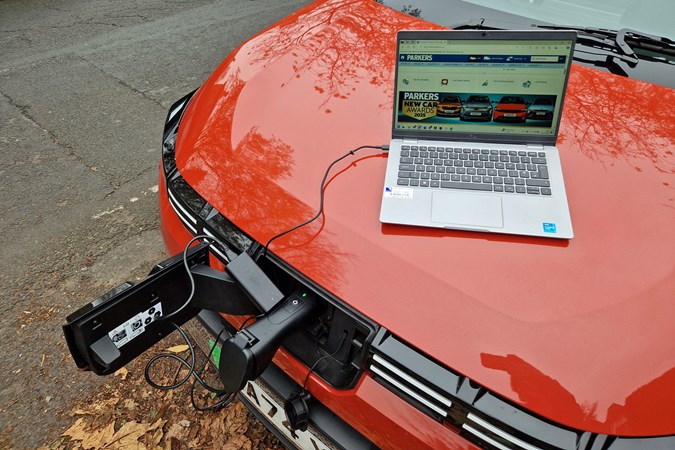
The Spring fights back with a Zen warranty package that gives you as much as seven years of overall cover (see below) and a reasonable level of standard equipment. This includes a novel ‘vehicle-to-load’ solution on the Extreme that allows you to power 240v electrical items by plugging them into the car – although how useful that will actually be to electric city car buyers we’re not entirely sure.
Servicing and warranty
All Dacia Springs come with a standard, run-of-the-mill three-year, 60,000-mile warranty, with the battery covered separately for eight years or 75,000 miles, whichever comes first. However, Dacia also has a Zen warranty offer, extending cover up to seven years as long as the vehicle is serviced at a Dacia dealer.
To help make servicing more affordable, a selection of official service plans are available, allowing you to spread the cost.
Reliability
There are lots of unknowns around the Spring and its reliability since it’s such a new car to the UK.
However, Dacia in general has a decent reputation for its cars’ dependability, and given the popularity of the Spring in Europe and other markets since its introduction in 2021, we see no reason to suspect it won’t prove reliable. But we will update this page if that impression changes.
Ongoing running costs
| Road tax | £195 |
|---|---|
| Insurance group | 24 - 25 |
Get an insurance quote with

|
|



